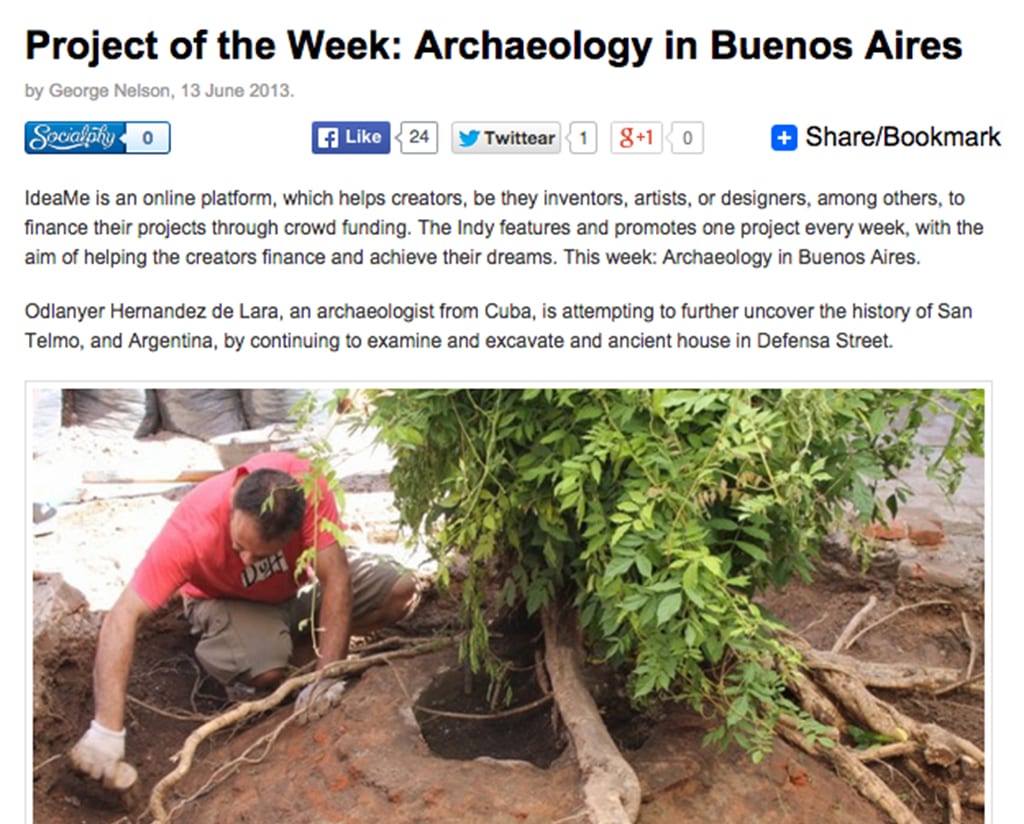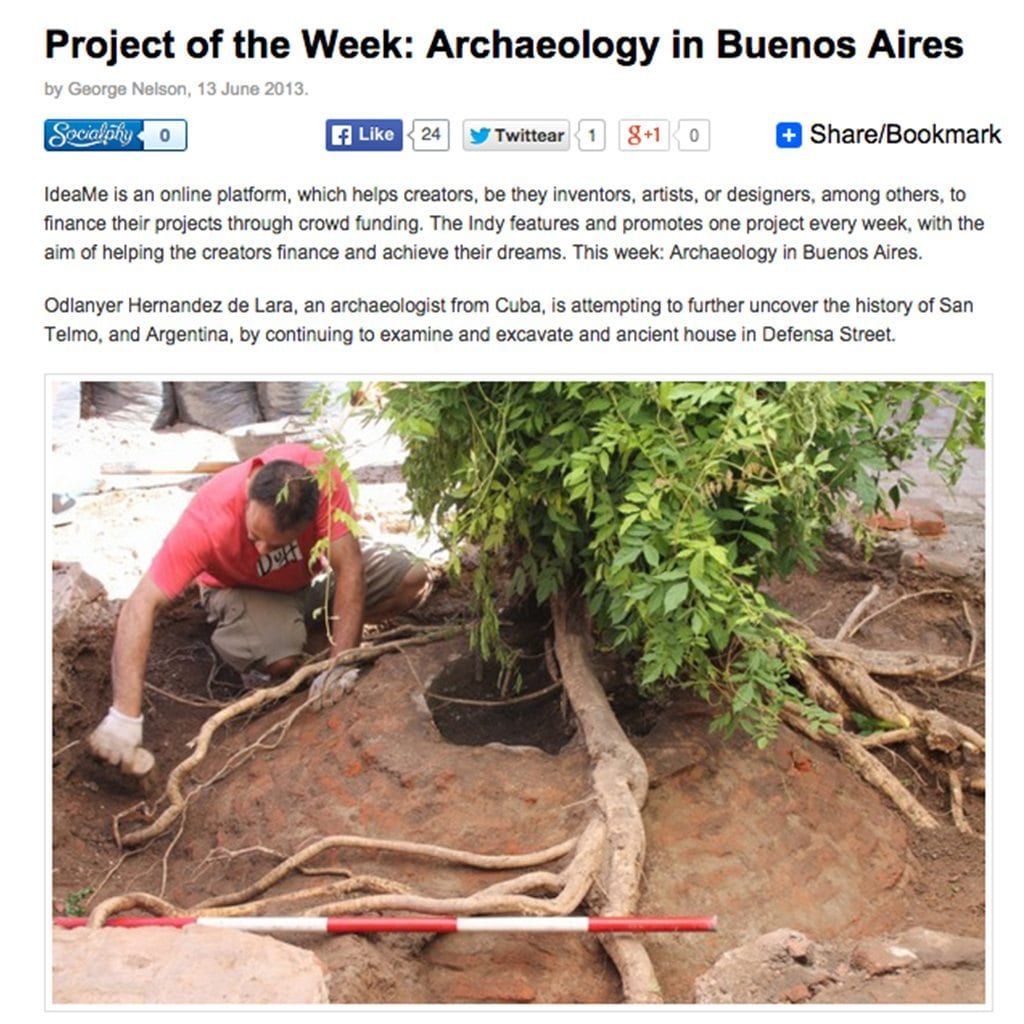IdeaMe is an online platform, which helps creators, be they inventors, artists, or designers, among others, to finance their projects through crowd funding. The Indy features and promotes one project every week, with the aim of helping the creators finance and achieve their dreams. This week: Archaeology in Buenos Aires.
By George Nelson
Odlanyer Hernández de Lara, an archaeologist from Cuba, is attempting to further uncover the history of San Telmo, and Argentina, by continuing to examine and excavate and ancient house in Defensa Street. “The owners of the house were renovating part of the building so they got in touch with the Heritage and Historical Institute of Buenos Aires to ask if anyone might be interested in conducting an archaeological dig, given that the house was so old,” explains Odlanyer on his Ideame page.
Like all archaeologists, Odlanyer was excited at the prospect of stripping back the house to its bare bones in the hope of finding ancient relics before starting the project earlier this year. However, as the dig progressed, it soon became clear that Odlanyer and his team were not working on an ordinary house. The hospitality and willingness of the house’s owners, together with the discovery of a well located in the middle of the main courtyard, made for a special dig.
Within the well they found fragments of ceramic plates, glass, ironwork, a even preserved food, all of which tells a story about not just the history of the house and the people who lived there, but of Buenos Aires and Argentina. “Inside, together with lots of of earth, countless archaeological artifacts were waiting for us. They appeared to be from different periods but are all important when it comes to understanding what happened on site. Everything we find helps us to interpret the past,” Odlanyer adds.
Each and every finding has been cleaned, documented, and is in the process of being sent away for laboratory analysis. Of particular interest is a coin made in Lima, Peru, harking back to 1805 and the reign of Carlos IV. Discovery of the coin has opened up new channels of investigation given that it is unlike other coins from the same era, as it is not cast from silver, suggesting that it might be a fake, which would imply evidence of money laundering during the early 1800s.
With so much success the first time around, the owners of the house have agreed for Odlanyer and his team to set up a second dig, with the aim of delving deeper into the house’s foundations where more unusual finds are now expected. Preliminary excavations uncovered what is thought to be the openings of two wells leading to subterranean structures. Odlanyer is sure that unearthing these two openings will lead to further discoveries and ultimately a greater understanding of how people lived, ate, and cooked over 200 years ago.
“The two underground structures fueled the IdeaMe project, in a bid to carry out the necessary works. The money will cover expenses of food equipment, as well as tools and materials for preservation and restoration, all of which will help us uncover new findings,” he explains.
With any potential money raised he hopes to hold an exhibition to showcase the findings from the first dig. If 25% of the funding goal is raised Odlanyer and his team will be able to complete excavating the first well, and if half of the final amount is raised then the two new wells will be examined. With the full amount the archaeology team will be able to completely excavate the sites and fund an exhibition.
In return for donations Odlanyer is offering a range of prizes from a full archaeological report detailing all that is found during the excavation to a chance to photograph the dig. An invitation to an asado to meet the team is also up for grabs.



